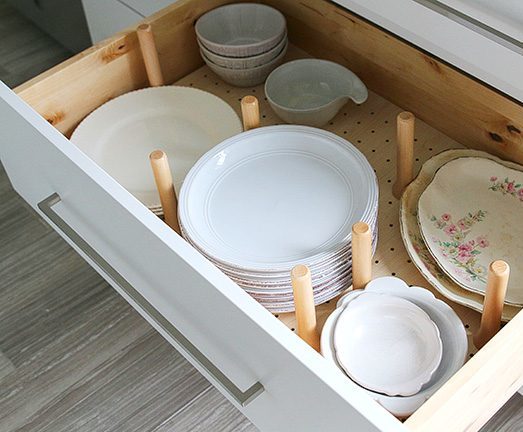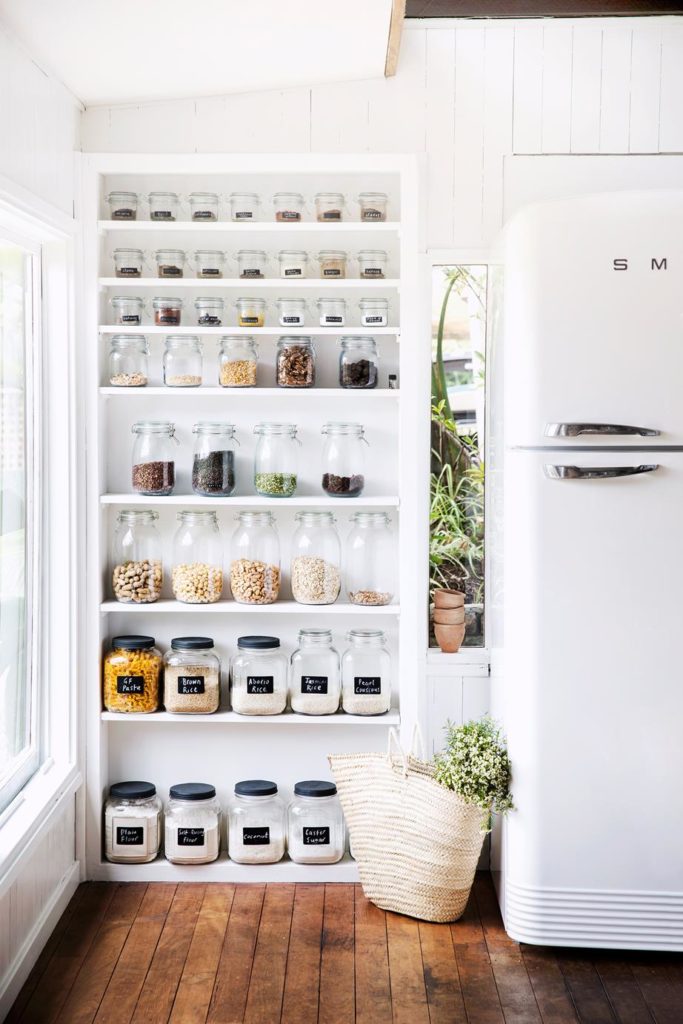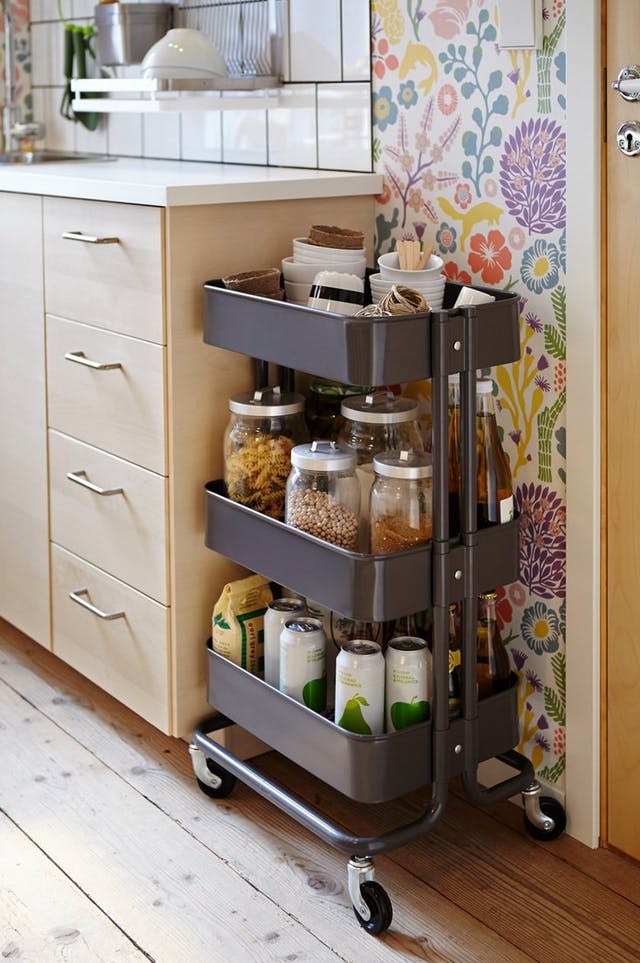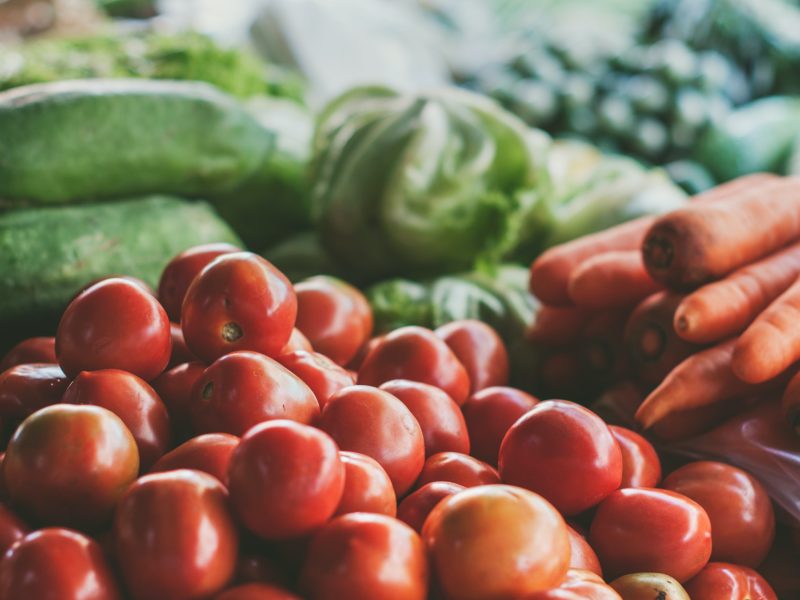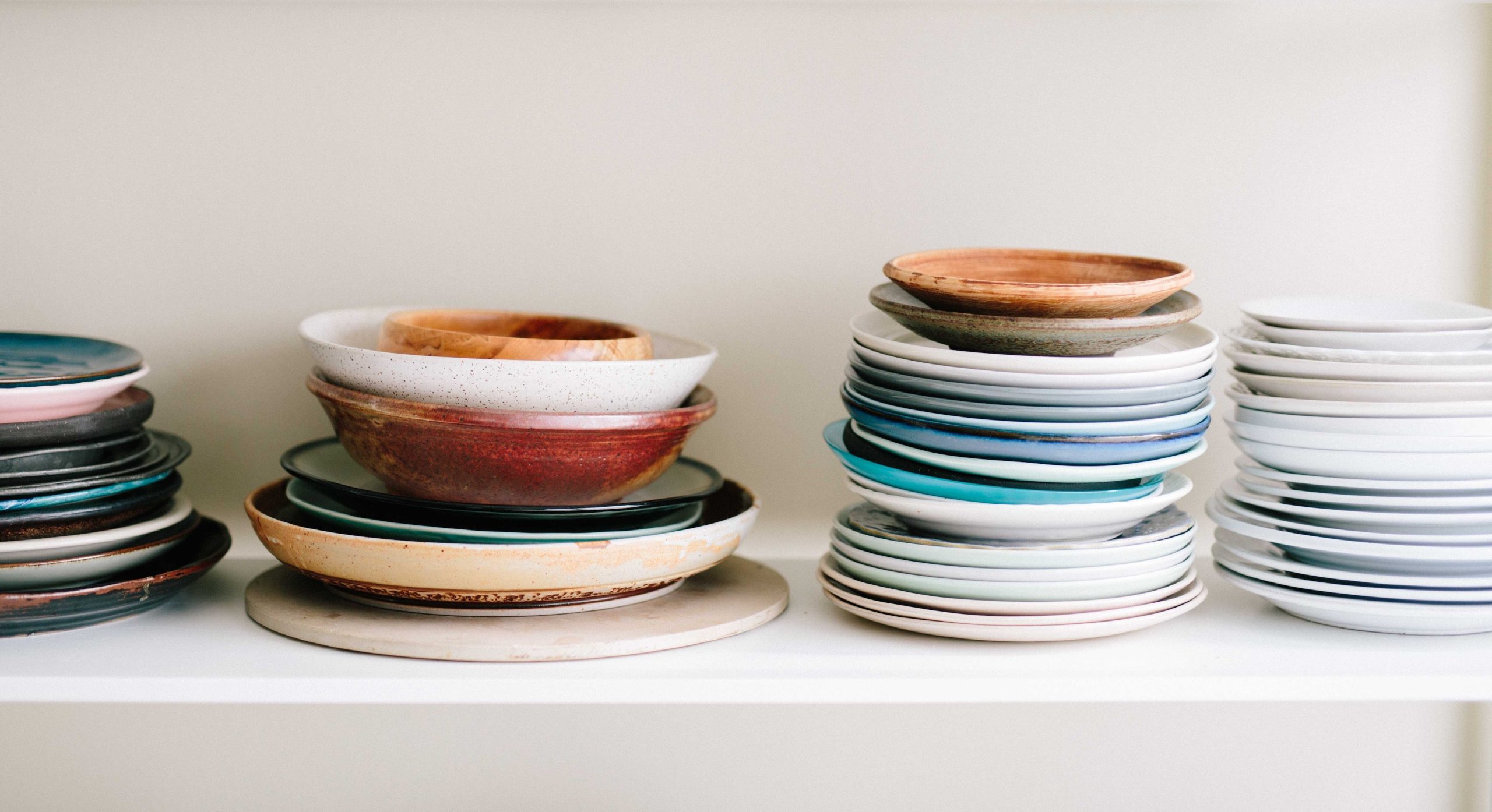
How to Maximize Your Kitchen Space, Whether You Rent or Own
By Taylor Murphy
Food lovers spend a lot of time in the kitchen, and we know there’s nothing more exasperating than when a messy, unorganized kitchen turns your quick 30-minute recipe into a two-hour-long ordeal. To restore order, cleanliness, and (perhaps) your sanity, maximize every inch of your kitchen with our best tips.
The Drawers
Say “goodbye” to that junk drawer filled with takeout menus and random plastic forks. Opt for a utensil caddy to free up drawer space and make utensils readily available so guests don’t have to go around guessing where to get a fork.
You can also use a pegboard organizer to fill drawers with plates. The pegboard knobs keep the plates in place, preventing chipping or breakage.
Additionally, if you have lots of drawers, make putting things away (and finding them again) easier by only filling them with similar items. Think of a drawer just for Tupperware lids, one for cutting boards, and another for small appliances.
The Cabinets and Pantry
In the pantry, label each shelf with what will be stored there. It may seem a little meticulous, but it’s bound to keep things organized.
In the cabinets, the usefulness of a lazy Susan cannot be understated. They create rummage-free experiences every time you search for an item you need. Just spin and you’ve found that spice, ingredient, or storage item you’ve been looking for. Shelf dividers are another no-fail organizing tool. They make storing cookie sheets, pot lids, and cutting boards that much easier. Use specialty organizers, such as pan racks, spice racks, and under-the-sink storage, if you have a problem area—like a mountain of pans collapsing on you every time you cook.
Cabinet doors are a “why-didn’t-I-think-of-that” example in terms of making the most out of every inch of space. Cabinet hooks are ideal for hanging colanders, aprons, and even hand towels.
Vertical Space (the Walls and Doors)
Vertical space should never be left unused if you’ve got a small or messy kitchen. Let’s start with the walls. Invest in floating shelves, which allow you to display pretty containers of spices, beautiful dish ware, or small appliances that get used regularly. Hang a magnetic knife strip up on the wall, right above where you do most of your slicing, dicing, and chopping. This way they’re off the counter but still within reach.
Consider a wall-mounted paper towel holder to free up counter space. It can be hung on the wall or on the underside of a cabinet.
If your pantry is itty-bitty, hang a shoe organizer over the door. Fill the compartments with cans of soup, bags of beans, non-refrigerated veggies, and snack packs. Whatever fits inside!
The Ceiling
Another solution for pots and pans is a ceiling-hung pot rack. Though best for kitchens with higher-than-average ceilings, a pot rack should be hung close to the stove and oven. Some pot racks even feature extra space on top to store fruit, vegetable, bread, and condiments.
The Floor
If your kitchen lacks in square footage, you may think placing anything on the floor is plain crazy. But, if you’ve got an unused corner try filling that space with a slim cart, like the cult favorite Ikea Råskog, and fill it with items you use daily: olive oil, paper towels, cooking utensils, etc. It’s also a clever pantry alternative or the perfect spot to gather baking essentials for a makeshift baking station.
If under-the-sink storage isn’t an option for your recyclables and trash, purchase a stackable garbage and recycling combination bin take up just half of the normal floor space.
The Countertops
And finally, the kitchen countertop. The most used and, often, the most cluttered and unorganized spot in the kitchen. To find the right solution for you, relocate anything you don’t use daily (or four to five times a week). Display those beautiful flour and sugar canisters on your newly hung shelves and move the KitchenAid mixer to a cabinet.
Try this new approach for about a week and see how the new arrangement works. There might be items you didn’t realized you used so often, and vice versa. Adjust your setup as needed. Next, place every item where it’s within arm’s reach of its most frequent use. For example, you should be able to grab the cooking utensils from the stove and the kitchen towels while you’re standing at the sink.
Finally, take stock of your kitchen organizers. From soap dispensers and paper towel holders, to utensil holsters and sponge receptacles, does everything help you stay organized and add ease to your kitchen experience? If not, replace them with solution-based alternatives that take up less space or have more functionality.


